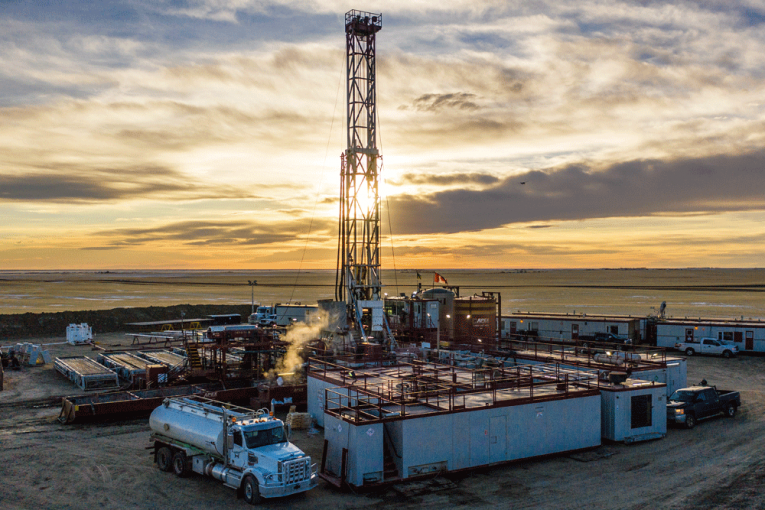
CALGARY – In a corner of Saskatchewan where drillers had previously spudded wells for oil and gas extraction, investors are pouring money into a previously untapped resource, which emits no carbon and could diversify the province’s economy.
“There’s a fair amount of capital out there that understands the technology, understands drilling, understands all of that but is a little nervous about the oil and gas space,” said Andrew Davidson, president and CEO of Royal Helium Ltd., a TSX-Venture exchange listed company that last year raised $7.5 million to drill three wells near Climax, Sask.
The company finished drilling the last of those three wells on Tuesday, in an area that is quietly becoming a hub for helium production in Canada and the centre of an emerging industry to feed an increasingly undersupplied U.S. market.
“We’ve been generating some attention from those (energy investors) and have been able to demonstrate that anything you understand about the oil and gas sector is exactly the same in the helium sector — there is not one difference in how you drill these wells,” Davidson said.
Shares in the Saskatoon-based helium producer are up 1,100 per cent in the past year, rising from 5 cents each to 60 cents on Tuesday.
The North American helium market has been upended in recent years after a 2013 law required the U.S. government to sell off its strategic helium reserve, which it has been maintaining in Amarillo, Tx. since the 1920s. The U.S. government is set to sell its last remaining helium stores by Sept. 2021 and the drain on that supply has turned the country into a net importer of the inert gas, which doesn’t combust and is used in MRI machines, to cool super conductors and as a purge gas for rocket ships.
“Initially, the uptake on what we were doing was slow. Explaining to people that helium was not about balloons. It took a little bit of education in the investment community,” Davidson said.
Now a small set of investors that previously focused on the oil and gas industry are eyeing an opportunity in a gas currently fetching a high price, and companies like Royal Helium and its competitors are scaling up drilling plans in the region.
There is no spot market for helium and its pricing is not transparent, but Davidson said helium prices have risen from US$84 per thousand cubic feet in 2012 to US$280 per mcf and was briefly up even higher over the past year.
Not far from Royal Helium’s three wells, Calgary-based North American Helium Inc. plans to drill 15 wells targeting helium deposits in the southwest corner of Saskatchewan this year after the privately held company produced its first helium from the area in July 2020.
Last year, North American Helium raised $39 million for the construction of its second helium purification plant in the area, designed with the ability to process 160 thousand cubic feet per day of purified helium, which would make it the largest facility of its kind in Canada.
Similarly, Richmond, Va.-based Weil Group is currently producing small volumes of helium in both Alberta and Saskatchewan and operates a helium purification plant in southern Saskatchewan, where it reactivated old wells drilled in the 1960s and repurposed the wells to produce helium. The company, which bills itself as the first commercial-scale producer of helium in Saskatchewan, did not respond to a request for comment.
The drilling programs represent a significant uptick in helium interest on the Prairies. In the past five years, only two existing oil and gas wells in Alberta have been converted to produce helium, according to the Alberta Energy Regulator. The province’s first helium well was drilled in 2018 but only began producing significant amounts of the commodity in April 2020.
The Alberta government hopes that drilling for helium will help laid-off oilfield workers get back to work and also open up a new stream of non-renewable resource revenue for the province, which continues to rely on oil and gas royalties. The province introduced a royalty rate of 4.25 per cent for helium production in April 2020.
“Developing untapped resources — such as helium — further diversifies our energy sector, as Alberta is well-positioned to help meet increasing global demand,” said Jennifer Henshaw, spokesperson for Alberta’s Associate Minister of Natural Gas Dale Nally.
Henshaw said the province doesn’t have data yet on how much it earned in helium revenues.
Across the border in Saskatchewan, where multiple wells have already been drilled and dozens more are planned, the nascent industry is outpacing Alberta. Royal Helium’s Davidson said that if the test results from the company’s first three wells are successful, the company plans to begin a continuous drilling program in the area and has identified up to 60 drilling locations.
Soon, Davidson expects the oil and gas industry, which has all the skills necessary to produce helium, to take an interest in the market.
Helium is its own element on the periodic table, meaning its carbon free, and since it isn’t combusted and doesn’t react with other elements, its use doesn’t emit CO2 like oil and gas does.
“I think that you will eventually see a push from oil and gas companies into this market because they’re going to have to,” Davidson said. “If the market sentiment (toward oil), right or wrong, doesn’t change, these companies are going to have to add different cash flow streams to their financials and helium presents that option without diversification into something that’s a completely different line of business, which is solar or wind power.”
• Email:
You can read more of the news on source
